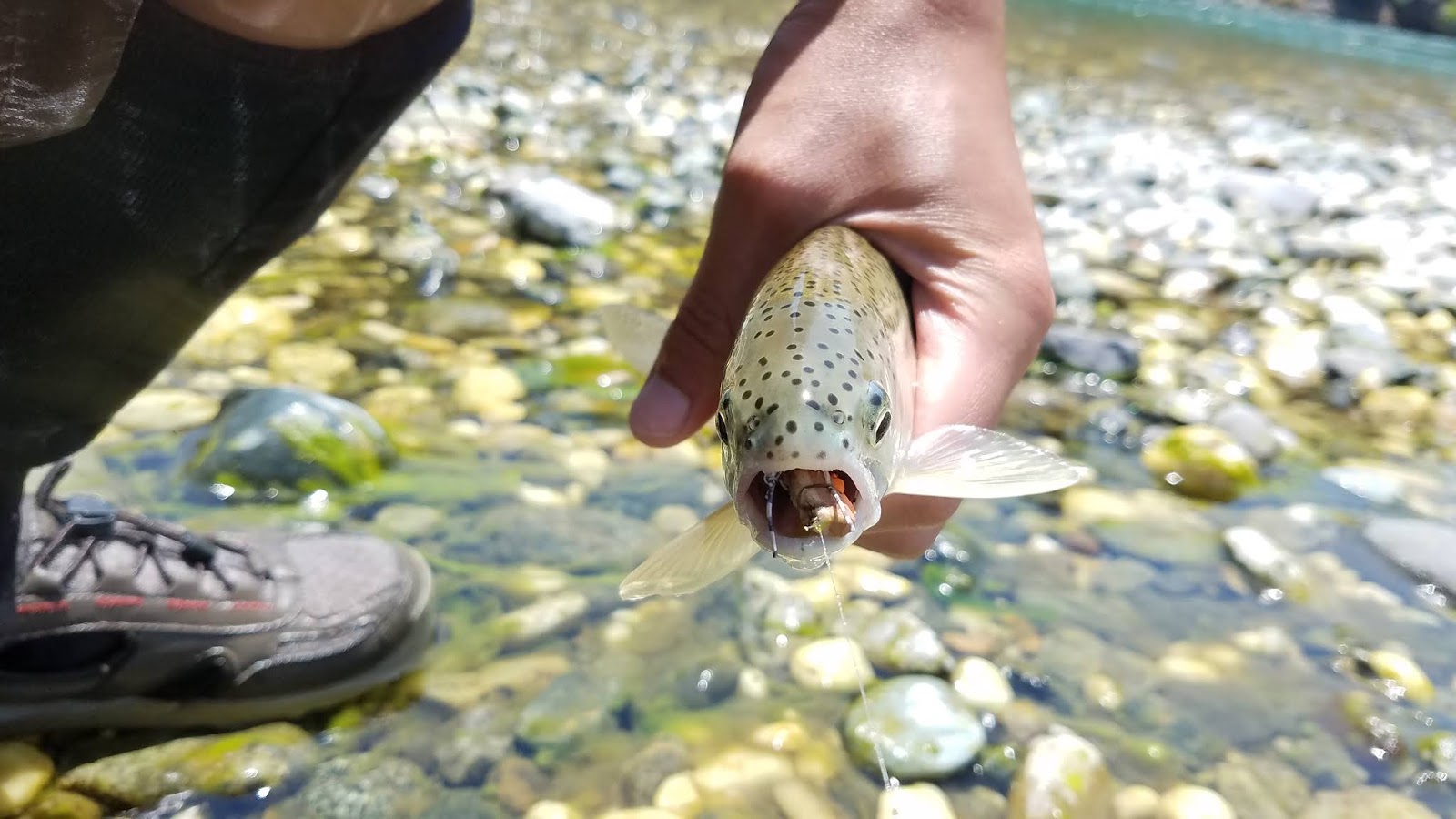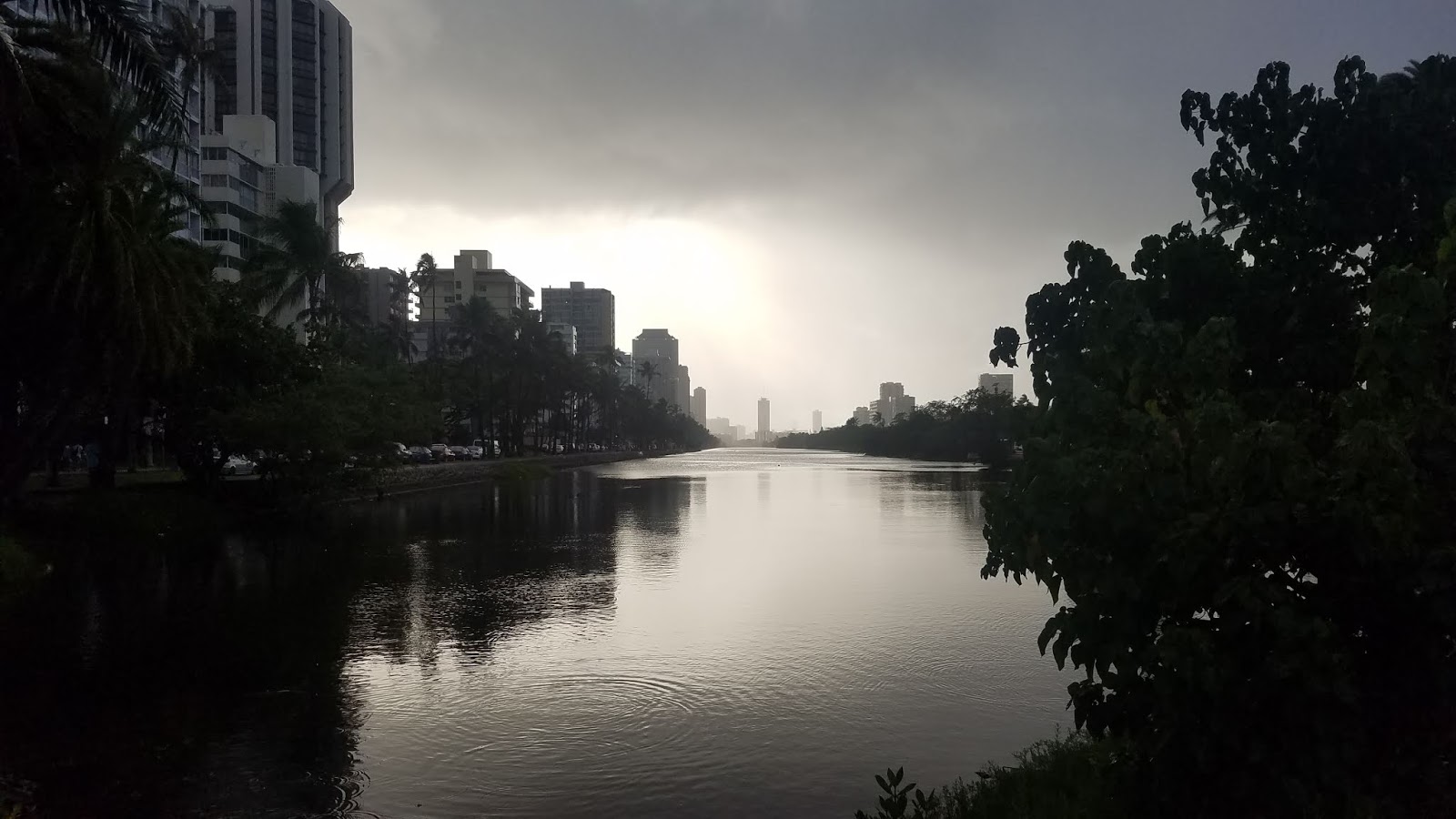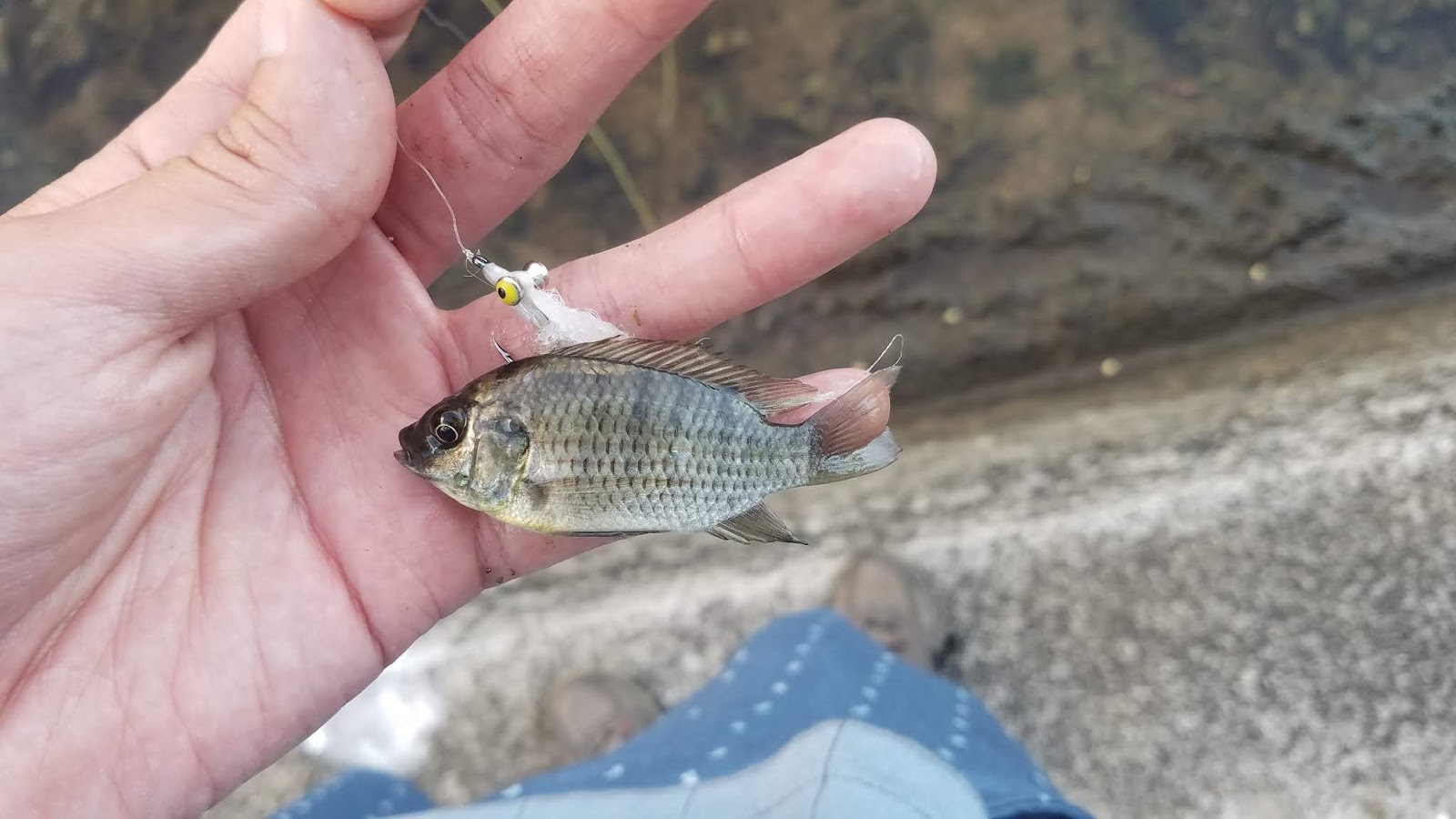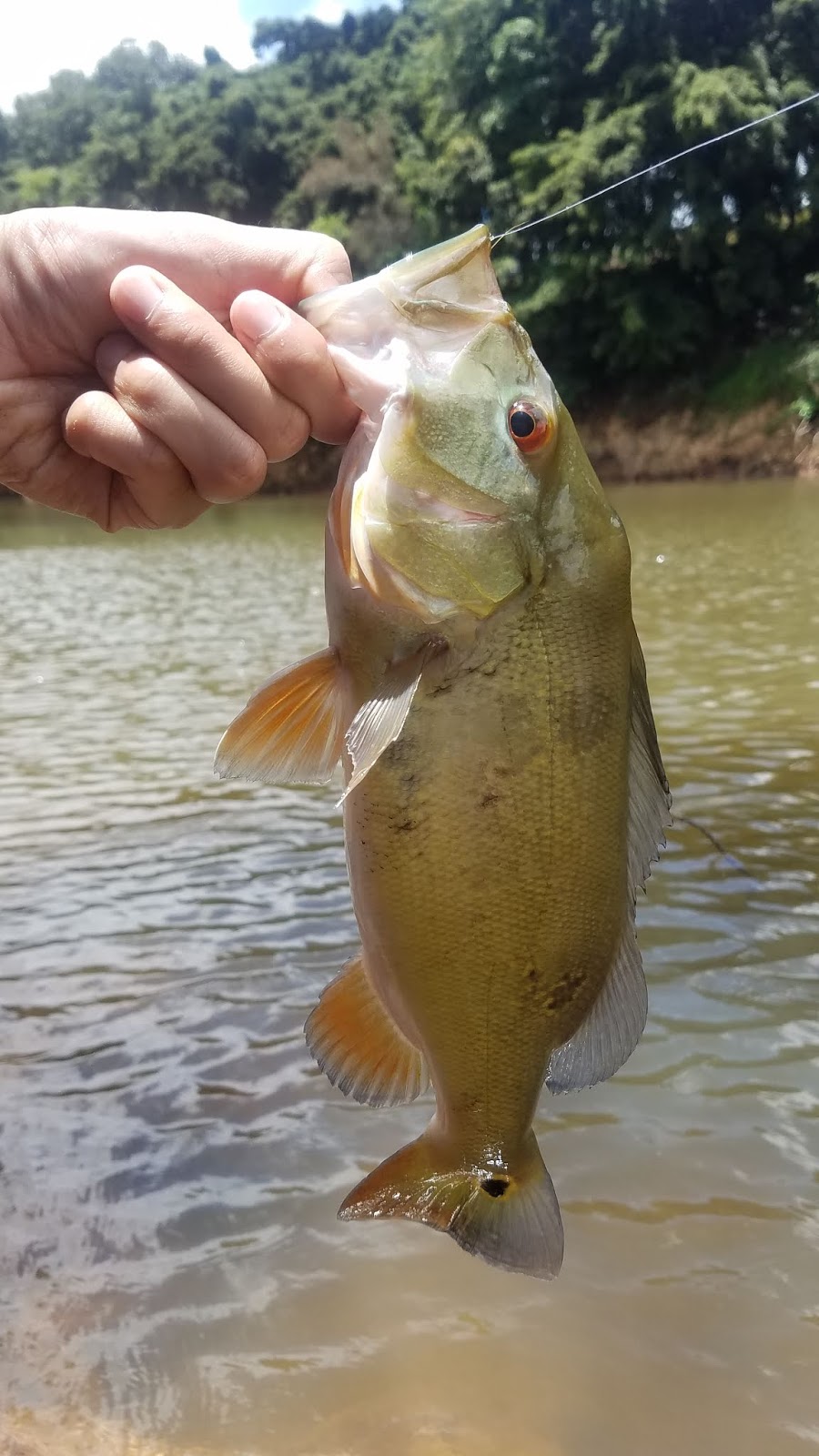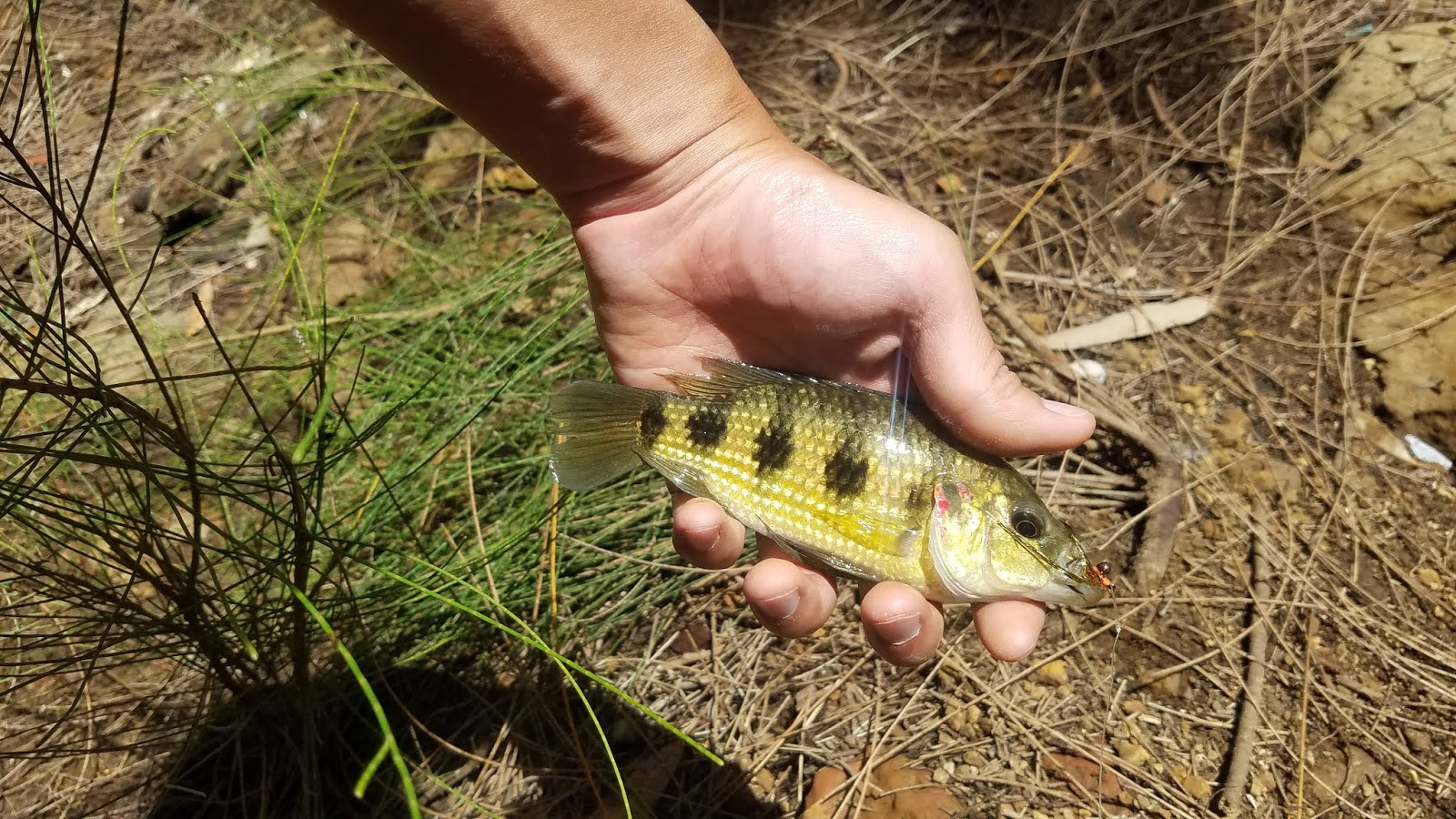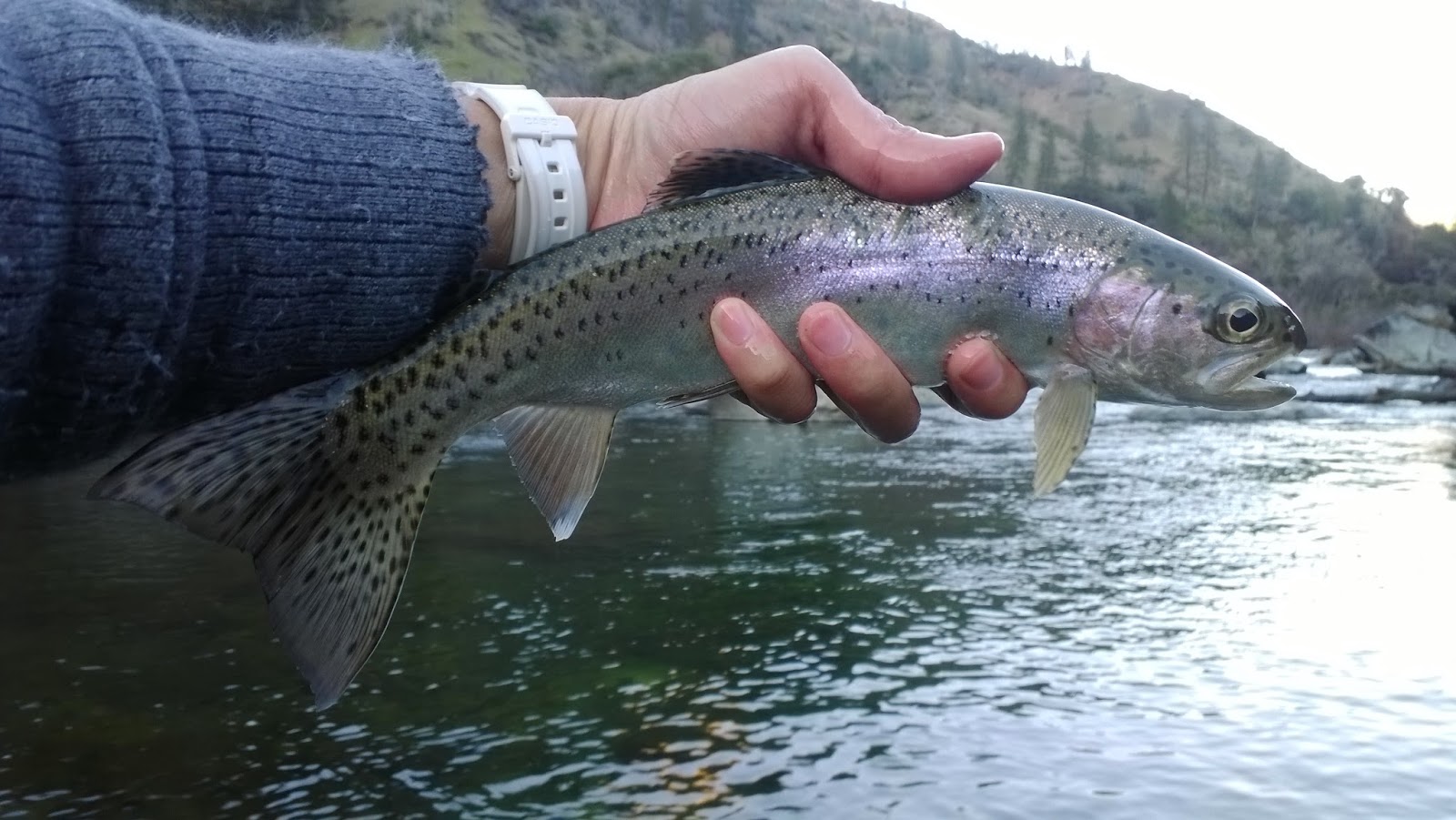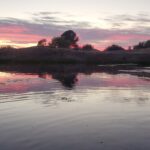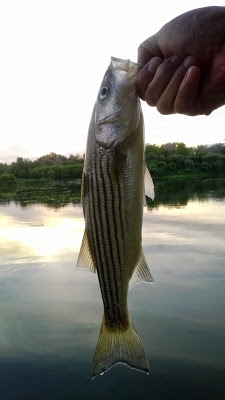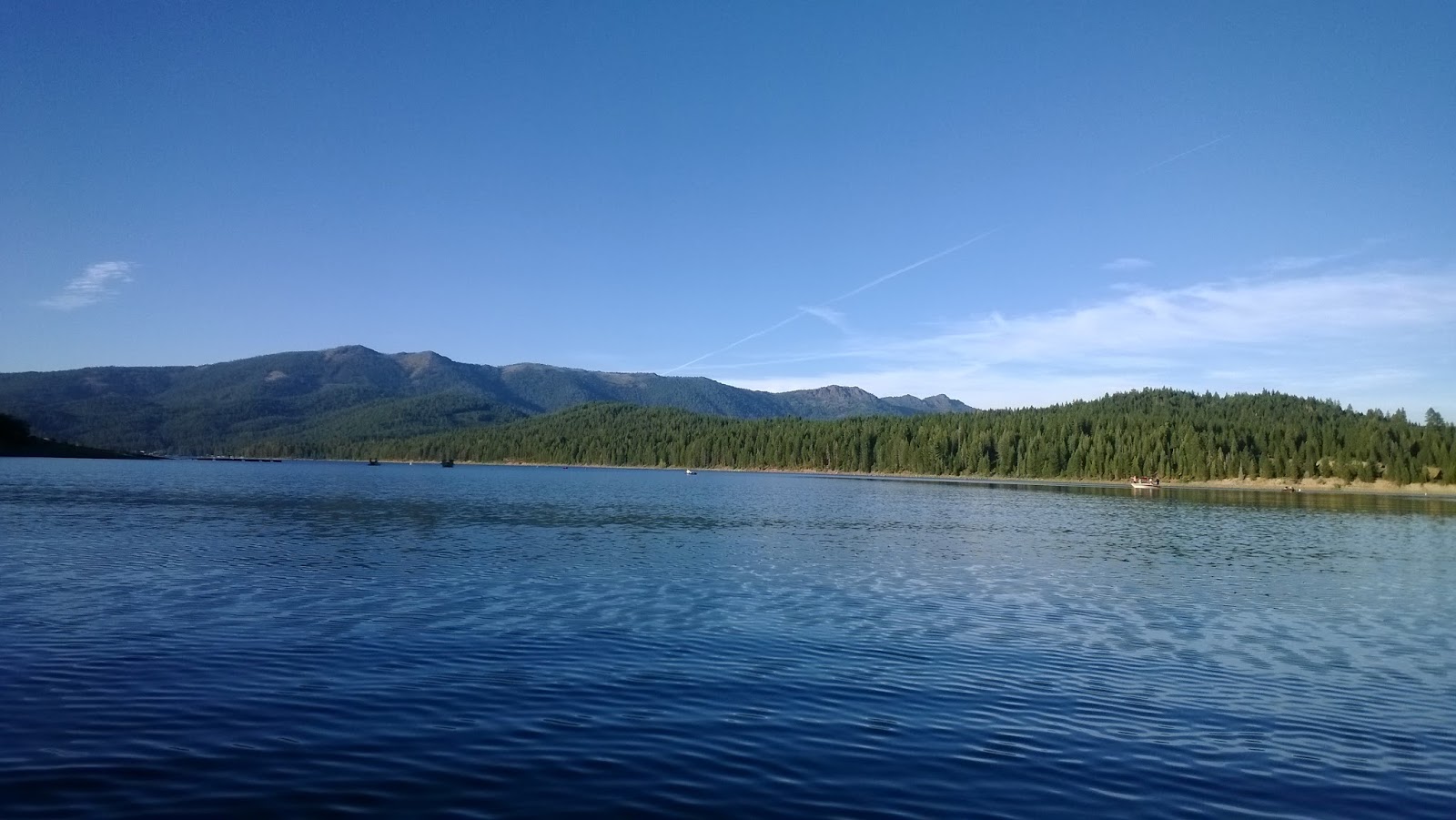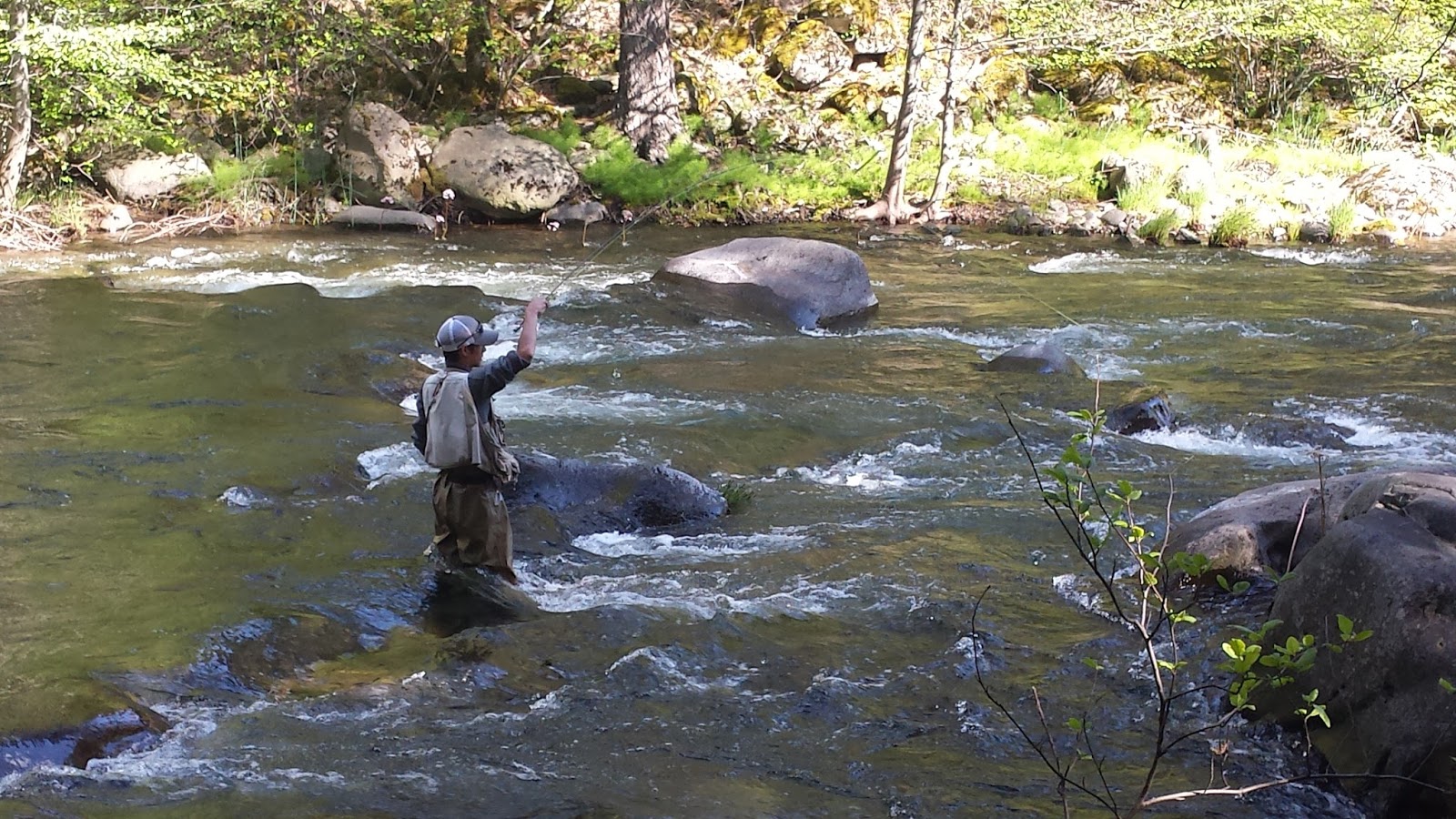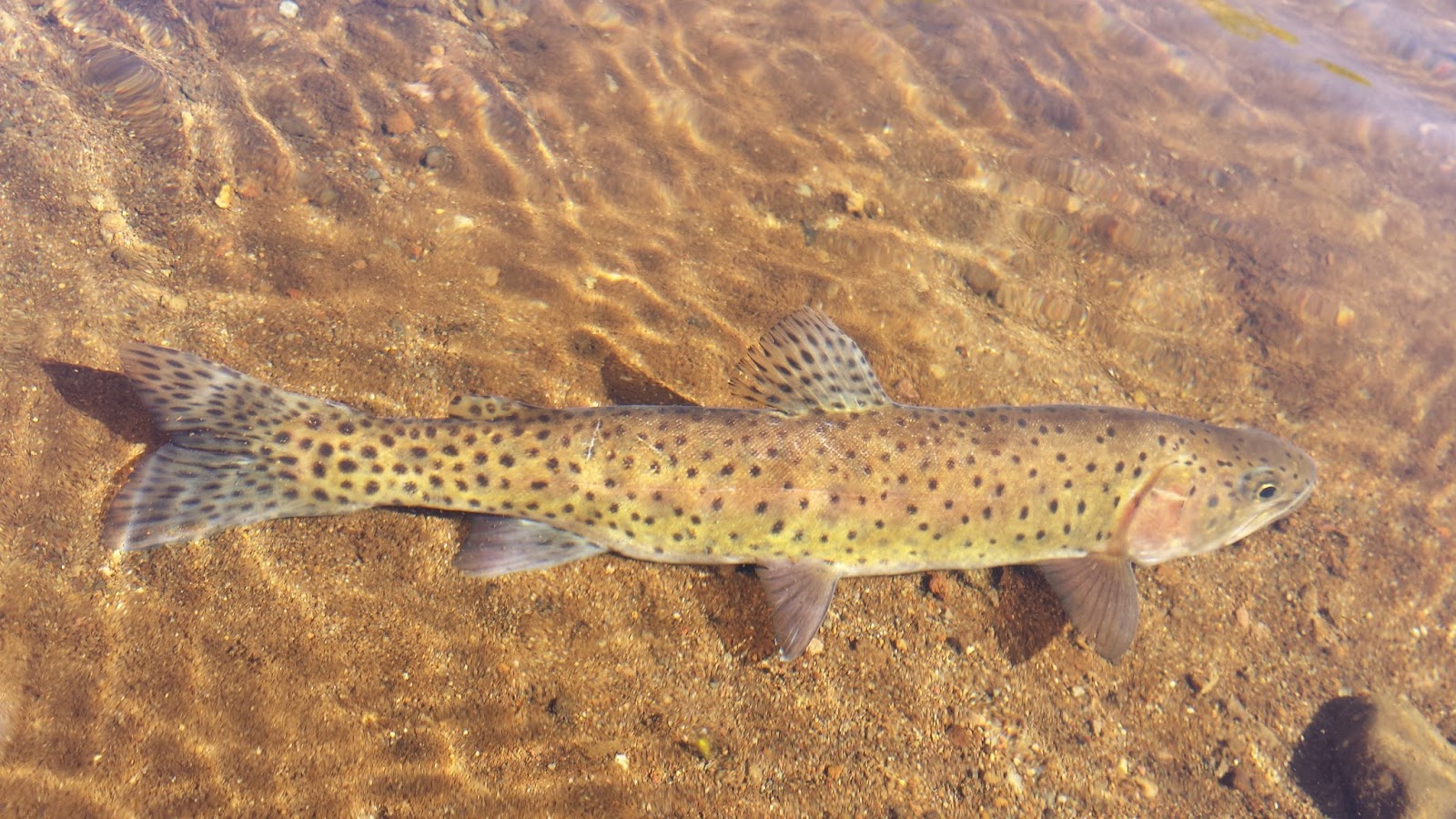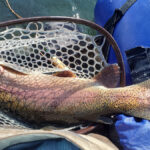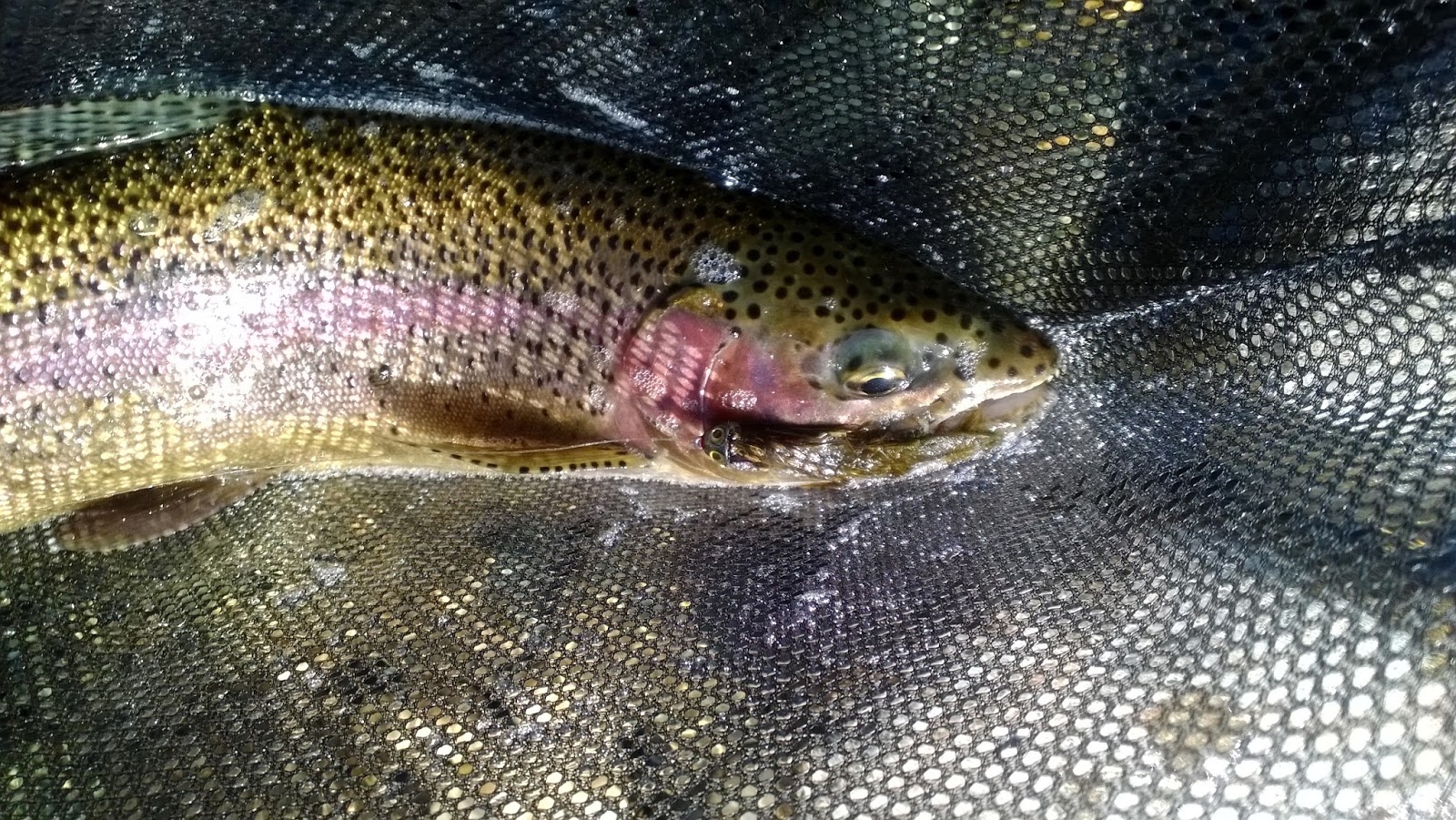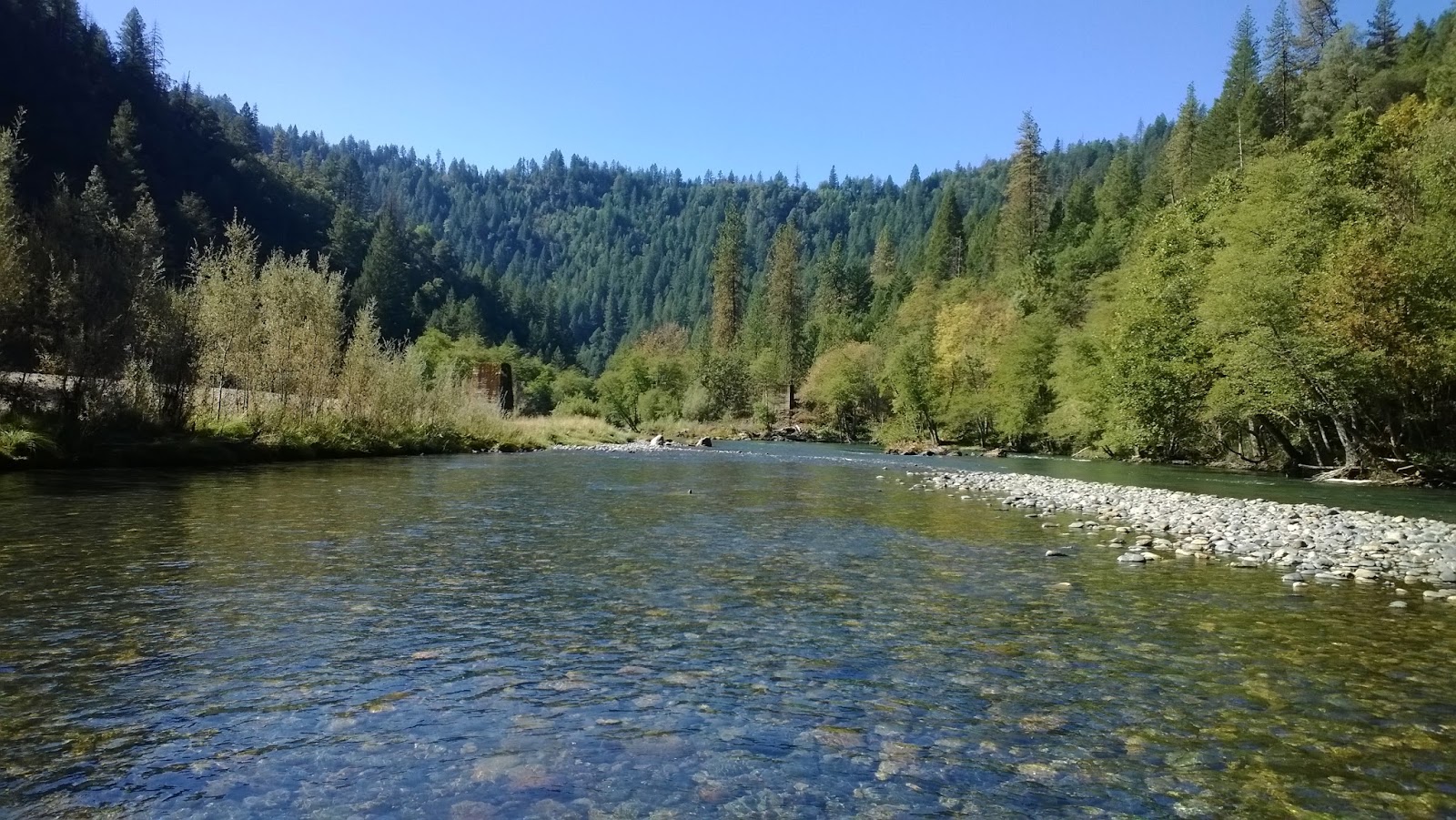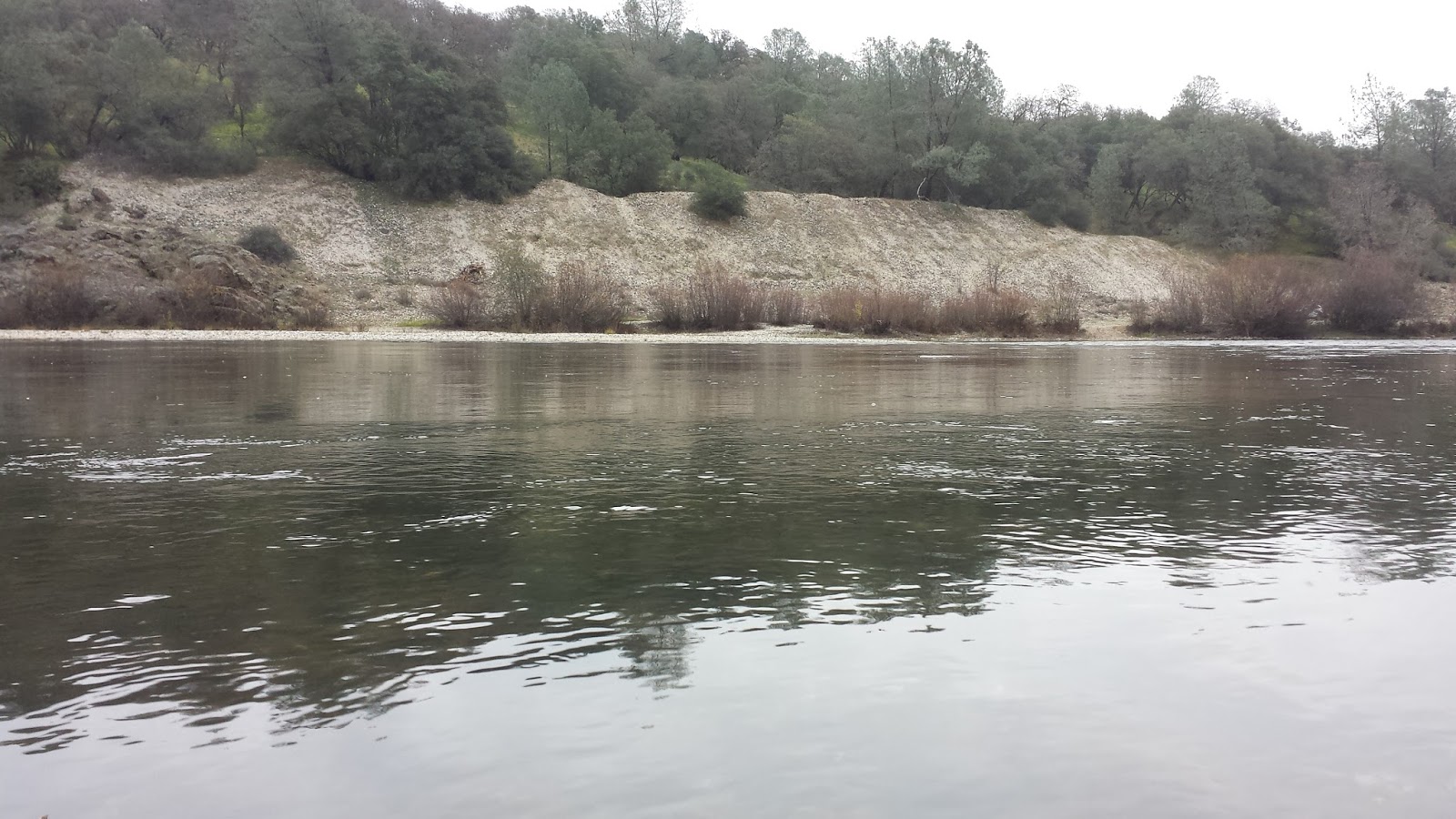Grasshoppers are a prominent food source for the fish on Lower Yuba during the summer months starting in June. Although considered terrestrial insects that live mostly on land they will often accidentally find themselves in the water from time to time after a hop in the wrong direction. Hoppers are one of the few dries you can have some success with blind-casting on the Lower Yuba during the summer. Hoppers can be both productive and fun to fish when you get the timing just right.
 |
| Yuba River Summer Flows |
For the past several years now the hopper bite on the Lower Yuba hasn’t been so good. The long drought in addition to the triple digit summer put a real hamper to the hopper population and though they were out there the bite wasn’t red hot. This year is different. Higher flows and slightly milder summer temperatures have helped put hoppers back on the menu.
I try to focus on areas where hoppers are most likely to end up. Structure near the bank such as rocks, trees, or tall grass are excellent ambush spots for trout that are looking up. The real key on the Lower Yuba is to make sure that you are fishing water deep enough for fish to hold. This usually means water that is at least 2-3ft deep or deeper. Seams and riffles that drop off into pools are also great hopper spots on the Lower Yuba.
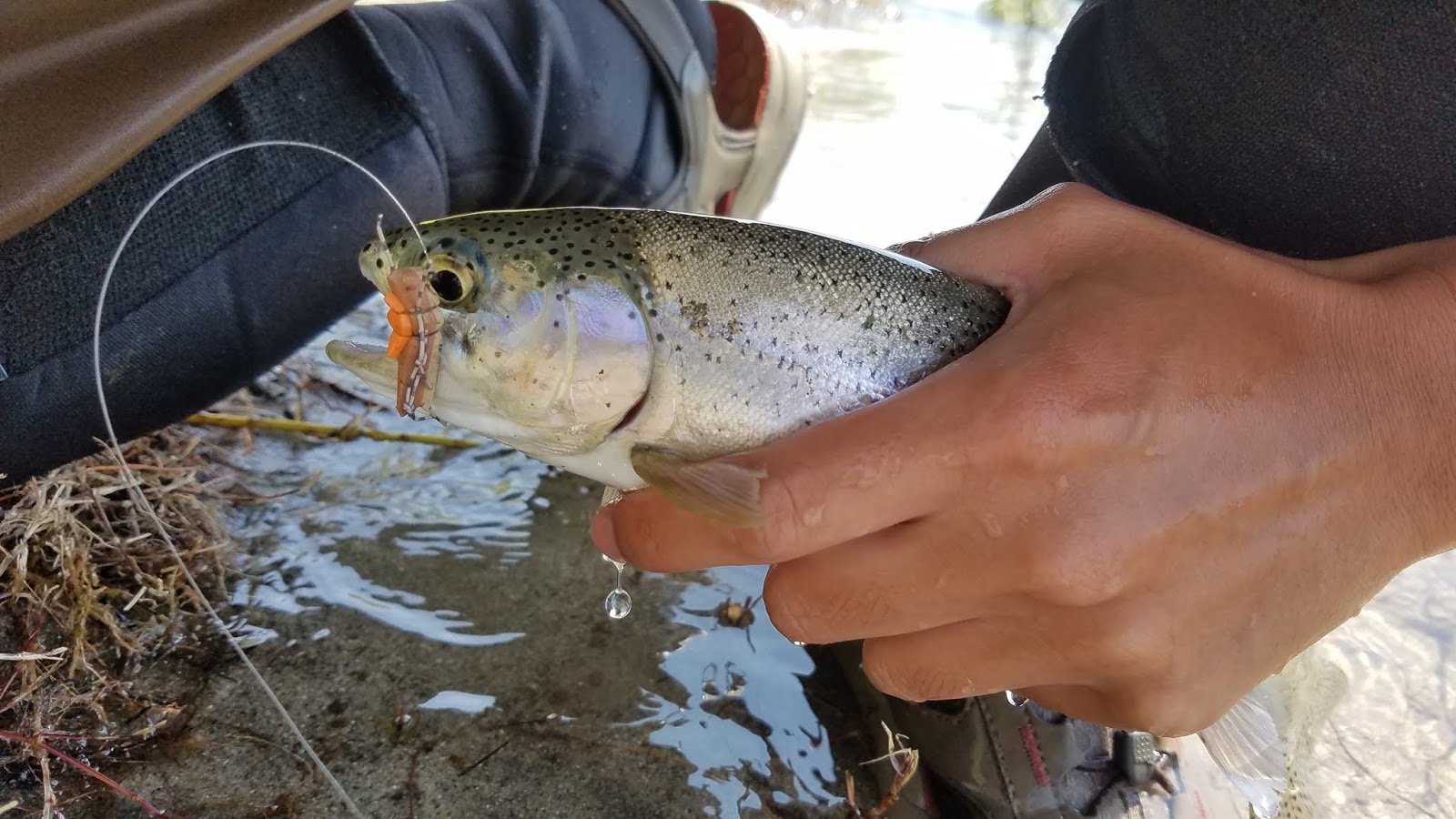 |
| Hopper To The Face |
Though the quality of the trout on the Lower Yuba has been improving, most of the wild trout out there are still pretty small. I’ve been getting into more 12”-14” fish which is a great change from last years 8”-10”ers. The hopper pattern I’ve had the most success with on the Lower Yuba is a size 6 Morrish Foam Hopper; this pattern is very buoyant and produces an excellent silhouette when in the water.
During my outing I scouted a small cranny along the bank that was fenced off by dead willows. The cranny was about 2ft deep and may or may not have held a fish. I splatted my hopper into the current and let it drift a few feet downstream, nothing. I casted again and watched as a silver bow came out of nowhere and grab my hopper. I fought it for a few seconds before the fly popped off. “That was awesome…” I chuckled with a smile. You definitely know you’re having a good day on the Yuba when you hook more fish on top than below.
